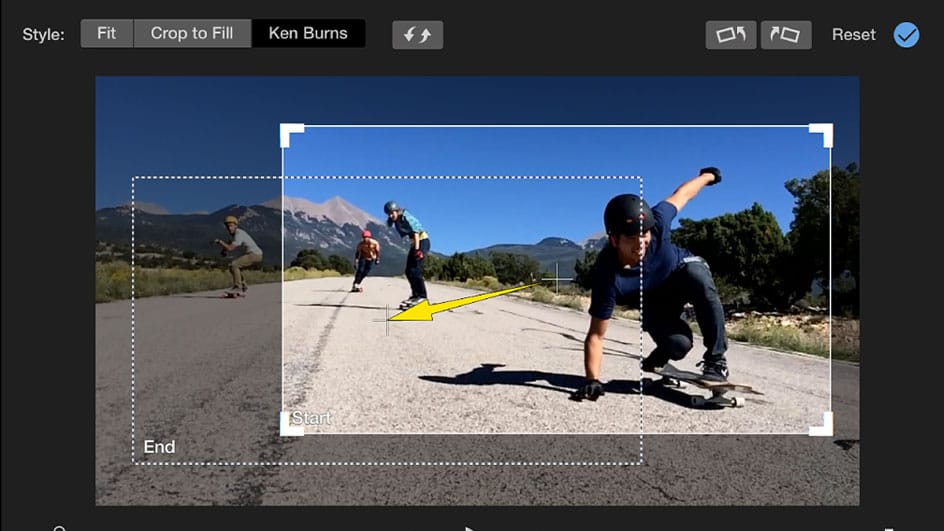What is the Ken Burns Effect (And How Do You Use it?)
Jourdan Aldredge

May 31, 2022
While the name Ken Burns might be synonymous with a dry yet informational documentary film style, for newcomers the famous documentary filmmaker might not quite be a household name.
So it should be no surprise that, for many people, the concept of a “Ken Burns effect” doesn’t ring any bells in terms of what that might look like as a video editing technique.
Still, just like Ken Burns’ methodical documentary style, this Ken Burns effect is actually one of the easiest editing tricks to copy and use in your own projects. And we’re going to show you how.
But first, a little history…
So, before we can define the Ken Burns effect, we have to introduce you to American documentarian Ken Burns. Known for his history-focused documentary series on PBS, Burns is the filmmaker behind such classics as The Civil War (1990), Baseball (1994), and Jazz (2001) to name a few.
All told, Burns has directed or produced dozens of feature length documentaries and many long-form docu-series exploring everything from American presidents to the history of country music. Burns has won numerous Emmy Awards as well as been nominated for two Academy Awards for his works.
Still, while Burns’ documentaries cover a diverse array of topics, his signature style remains consistent throughout.
According to a New York Times biography, Burns’ style is one “of cutting rapidly from one still picture to another in a fluid, linear fashion [and] then pepped up the visuals with 'first hand' narration gleaned from contemporary writings and recited by top stage and screen actors."
Notable for its simplicity and directness, Burns’ signature style is most often achieved in the edit with digitally produced camera moves over archival images as interview video clips are used with voice over narration.
And thus the Ken Burns effect can simply be best described as a style which uses pans and zooms to add depth and movement to still images.
When coupled with an underlying soundtrack often pulling archival music from the same relevant time period, the overall effect is easily digestible, enjoyable to watch, and oddly reassuring even when the content is complicated, disturbing, or upsetting.
So, now the question shifts: How do you capture and recreate the Ken Burns effect in your own edits and projects?
Well, as you might expect for a style so cut-and-dry, it’s really not that difficult. Let’s start by going over just how to turn still images into video clips. Depending on which video editing software that you use, this is also a pretty simple and straightforward process.
In fact, most NLE apps (like the example above in Adobe Premiere Pro) will allow you to add images directly and you can drag and drop them onto your timeline, then simply extend them for as long as you’d like your clip to be. The trick is to find period photographs with solid image quality so that they can be clearly seen regardless of your video resolution.
Here are some quick and helpful tutorials to check out:
Once you have your stock or archival images in your video editing software of choice, the next step to achieve the Ken Burns effect is to add movement. As you can see in some of the examples above, Burns likes to use a mix of pans and zooms for his still photographs. (He rarely uses tilts or nonlinear movements on still pictures because it can cause confusion.)
Burns is also a master of finding small details — often faces, hands, or items — hidden in old photographs which can connect with the voice over narration or help build a grander theme overall. Finding these points is up to you, but the tools will pretty much remain the same.
Video editors can easily use some of the built-in zoom effects found in video editing softwares like Apple's iMovie app or with other third-party extensions. And in fact, here are some helpful tutorials for adding pans and zooms to your images:
Once you add in keyframes and some simple still imagery with slow zooming and other camera moves that slowly pan from the start frame to the end frame, the Ken Burns effect can be really helpful in bringing static images to life.
However, while movement over images might be the most synonymous aspect of the Ken Burns effect, the overall technique doesn’t work without the right audio narration and soundtrack.
Since Burns’ documentaries sometimes cover subjects which happened many decades ago, he will often make use of older interviews with key characters in his story as well as shoot and produce new interviews as needed.
Because of this, consistency really becomes the key from a production standpoint. The goal of any Ken Burns style feature is to remove all distractions in the framing of interviews or in the quality of the audio.
From there, the Ken Burns effect absolutely needs period-appropriate audio underneath the images and voice over to really give it that authentic feel. When possible, it would be ideal to find real archival audio from the time period in question. However, when that’s not available, stock music or royalty-free audio will be your best option to recreate a specific atmosphere.
Overall, while not too difficult to recreate, the Ken Burns effect can still be hard to master. It takes a keen eye for documentary storytelling, as well as a crafty video editing mindset to really turn some old boring photos into entertaining content.
If you’d like to learn some more tips and tricks for your own filmmaking endeavors, check out these additional articles from the Soundstripe blog: